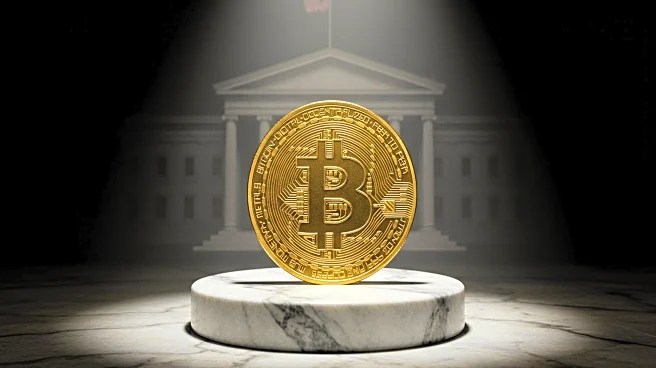What's Happening?
Ethereum's network has seen a significant increase in stablecoin supply, reaching an all-time high of approximately $130 billion. This growth is attributed to the passing of two U.S. Congressional bills, the GENIUS and STABLE Acts, which aim to streamline regulations around stablecoins, ensuring transparency and consumer protection. The surge in stablecoin liquidity is seen as a precursor to an altcoin season, with market participants anticipating increased liquidity injection into non-stable crypto assets. The supply of stablecoins is projected to constitute about 10% of M2 by 2030, indicating a bullish outlook for cryptocurrencies.
Why It's Important?
The increase in stablecoin supply on Ethereum highlights the network's dominance in stablecoin issuance and its role in the broader cryptocurrency ecosystem. This development is significant for the U.S. as it positions itself as a hub for crypto and AI innovation, holding a substantial amount of stablecoins. The liquidity provided by stablecoins could facilitate the growth of altcoins, potentially leading to a new altcoin season. This shift could impact various stakeholders, including investors, crypto exchanges, and blockchain developers, as they navigate the evolving landscape of digital assets.
What's Next?
The potential for an altcoin season hinges on stablecoin flows and the continued drop in Bitcoin dominance. Analysts suggest that a break below the neckline of the heads and shoulders pattern in stablecoin dominance could ignite a full altcoin season. This would require a continued rotation of capital from Bitcoin to altcoins, driven by stablecoin liquidity. Stakeholders in the crypto industry will be closely monitoring these trends to capitalize on emerging opportunities.
Beyond the Headlines
The regulatory environment surrounding stablecoins is evolving, with the U.S. Congress taking steps to ensure consumer protection and transparency. This could lead to increased confidence in stablecoins as a financial instrument, potentially influencing their adoption in traditional financial systems. The integration of stablecoins into the broader economy could have long-term implications for monetary policy and financial stability.











